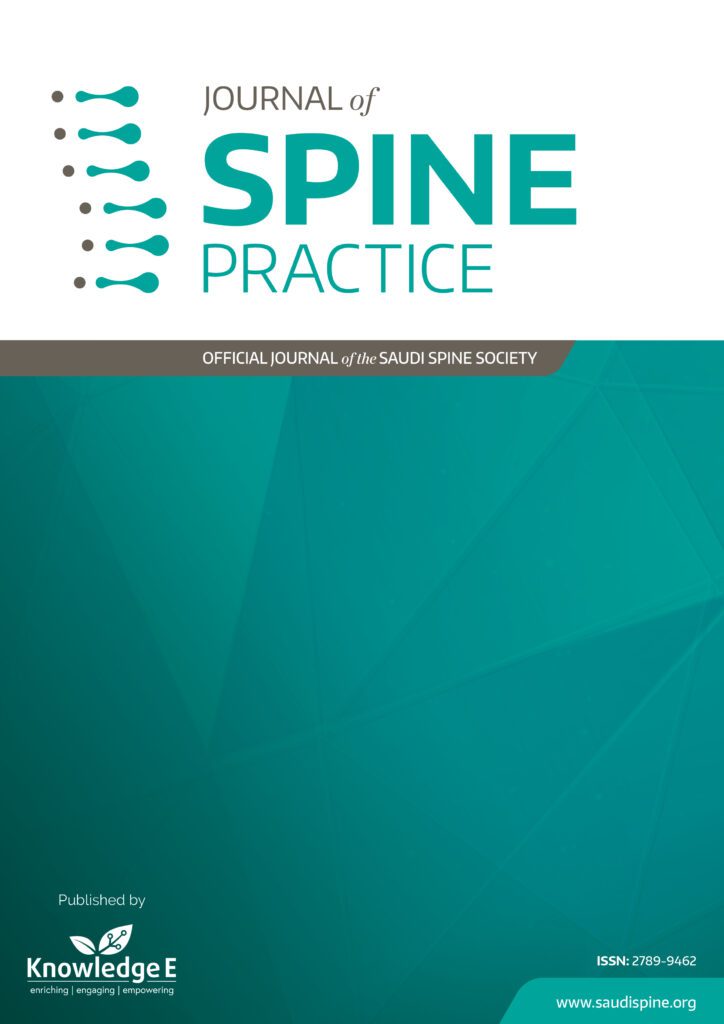
Journal of Spine Practice
ISSN: 2789-9462
Leading research in all spine subspecialties focusing on orthopaedic spine, neurosurgery, radiology, and pain management.
Causes, Patterns, and Outcomes of Nontraumatic Spinal Cord Injury
Published date: Nov 07 2021
Journal Title: Journal of Spine Practice
Issue title: Journal of Spine Practice (JSP): Volume 1, Issue 1
Pages: 9
Authors:
Abstract:
Introduction: Nontraumatic spinal cord injury (NTSCI), refers to damage to the spinal cord resulting from a cause other than trauma. It is a condition with immense functional implications for individuals involved. The incidence of NTSCI is difficult to estimate due to its heterogeneous cluster of a wide spectrum etiologies with varying pathophysiology. The most described NTSCI causes are degenerative diseases and spinal stenosis, tumors, and inflammatory conditions. In order to avoid delay in diagnosis and time-critical treatment, knowledge of each is important. We aim to fill the gap of knowledge by assessing the causes, patterns, and outcomes of NTSCI.
Methodology: This retrospective cohort study included all patients who had an NTSCI between 2016 and 2020. In addition, patients aged >18 years and treated surgically were included. Demographic and clinical data were collected. Pre- and postoperative American Spinal Injury Association (ASIA) impairment scales and last follow-up outcomes were assessed.
Result: A total of 124 patients were included. The mean age of our population was 62.8 years with an average BMI of 31; 8% of them were smokers. Upon admission, back pain (45%), numbness (43%), and inability to walk (18%) were the highest recorded clinical presentations. Spinal stenosis (45%) followed by degenerative cervical myelopathy (27%) were the most observed pathologies. Lumbar injuries accounted for 45% whereas cervical injuries accounted for 41% and thoracic injuries for 14%. The average length of stay period was 23.2 days, with 48% of patients transferred to inpatient rehabilitation, and the mean follow-up duration was 15 months.
Conclusion: In summary, after assessing the causes, patterns, and outcomes of NTSCI, our study showed that comorbidities were observed in 85% of patients. Spinal stenosis and degenerative cervical myelopathy were the most common etiologies. Patients who presented with urinary incontinence and/or bowel incontinence upon admission had a significantly worse ASIA score at last follow-up. Degenerative pathologies recorded a worse ASIA score, and thoracic injuries recorded the worst ASIA score improvement compared to cervical and lumbar injuries. In total, 57% of the patients showed full recovery at the last follow-up.
References: